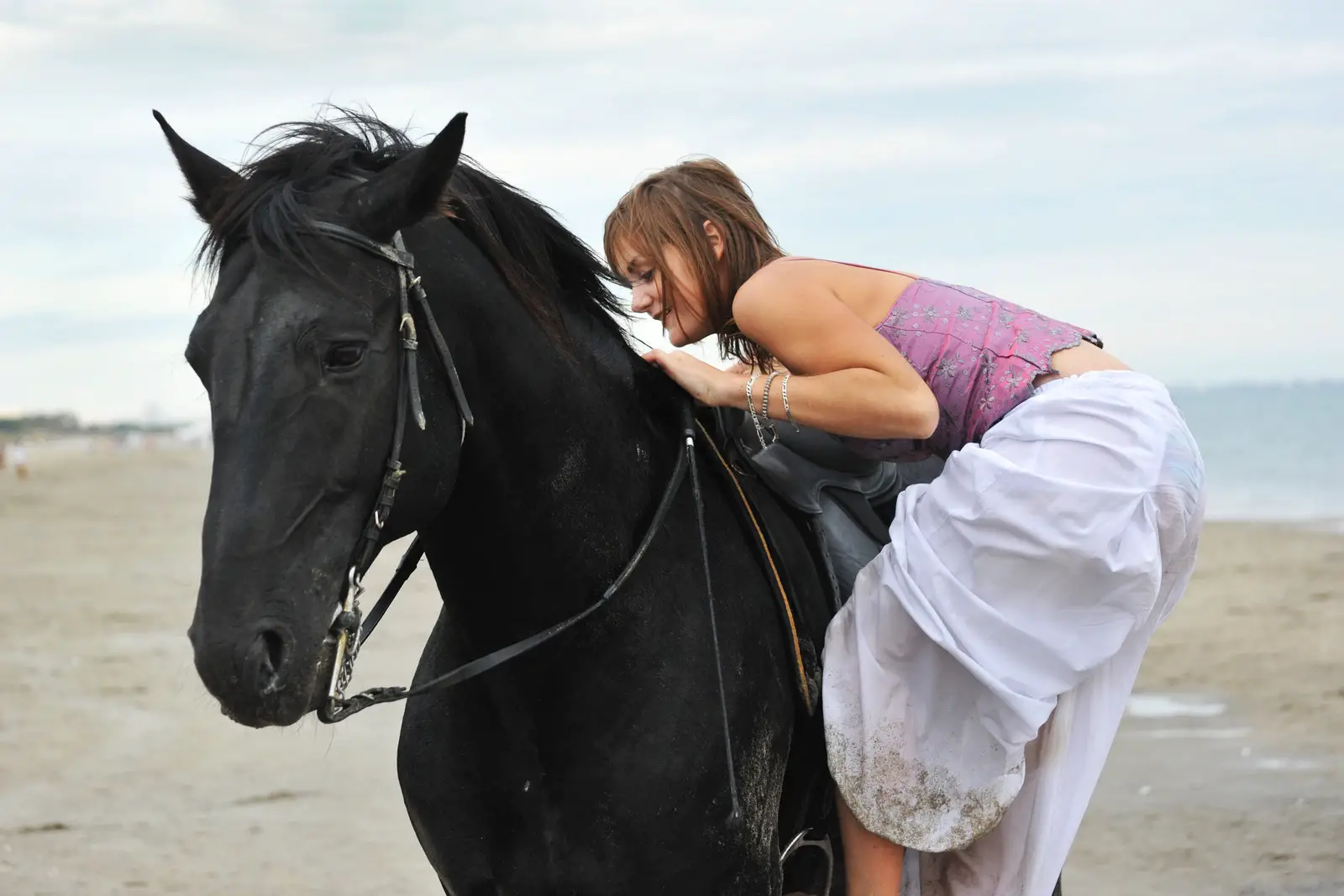You know the old adage that you have to “get back on the horse” if you’ve fallen or been thrown by it (or by life), but what about getting on the horse for the first time? “Getting back on the horse” has become a fine metaphor for overcoming the obstacles and stumbles that characterize life, but symbolism aside, what about actually getting on a horse in the first place?
If you are new to the world of horse riding, getting on an animal that weighs well over 1000 lbs and has solid hooves that can strike you with great force if you make one wrong move can seem terrifying. However, the idea that horses can “smell fear” is another trope that’s worked its way into our lexicon, and it happens to be true, so you’ll need to conquer your fear before mounting a horse.
With that in mind, let’s take a look at the finer points of how to mount a horse, how you should approach it, and what you need to do so you don’t have to be worried about having to get back on after you’ve been thrown.
How to Get on Your Horse
First, it should be noted that many riders like to make use of a mounting block to give themselves a leg up. However, this guide will cover how to get on a horse without a mounting block for those who don’t have one.
Before you get on the horse, you need to make sure your equipment is in place. Do you have your helmet on, comfortably and snugly in place? Staying on a horse involves a lot of balance, and you don’t want to upset or else be bothered by constantly readjusting your helmet. Check that the saddle, reins, cinch, bridle buckles, and other essentials are ready to go.
Once you’ve done that, you’ll want to approach the horse slowly and calmly. Not only can horses smell fear, but they can easily get startled themselves. Approaching them from the front or rear is a bad idea as the former can seem aggressive and the latter can feel like you’re sneaking up on them. Instead, approach the horse from the side, making sure that the horse can see you the whole way. Turn the stirrup in such a way that the leather is flat when you sit on the saddle.
When it comes to actually choosing where to get on a horse, there are a couple of options available to you. Some people prefer to face forward while doing so, which makes it less likely that you’ll accidentally poke the horse with your toe. Others prefer to face toward the horse a bit more or even backward, as this makes it easier to mount. There’s no right answer here, so weigh the pros and cons and choose whatever approach you’re more comfortable with. If you choose to face toward the horse or backward, the stirrup should be turned toward you, whereas if you face forward, you’ll want to turn it counterclockwise.
Now it’s time to actually mount the horse. Place your foot in the stirrup in such a way that the ball of your foot rests at the bottom. Grasp the reins and a tuft of mane with one hand and the cantle of the saddle with the other. You are now in position to use your foot already in the stirrup to push yourself up as your hands help pull yourself up and over and onto the horse.
As you balance on your horse’s withers atop the saddle, let go of it and grasp the reins with both hands.
While lifting your leg over the horse’s withers, make sure to keep it nice and high – you don’t want to accidentally kick the horse.
Make sure you ease down softly onto the saddle as well. Plopping down with great force could hurt the horse’s back or startle them.
Those are the basics of how to mount a horse. Better still, following these basic steps can enable you to do so without using a mounting block, which obviously costs extra money.
Tips for Staying in Place
It’s one thing to get on the horse, it’s another thing to stay on.
The biggest tip for getting and staying on a horse is to remain calm. Again, horses can sense anxiety, so make sure that you mount the horse in a smooth and easy manner – no sudden shifts or movements.
As stated, one of the most important things to help you stay in the saddle is posture. Keeping your shoulder blades back is an essential component in that, helping you keep your back straight and thus preventing you from swaying too much. On that note, you’ll also want to resist sitting back on the saddle or sagging forward, but instead standing up and putting the weight on your stirrups.
You should keep your feet in the stirrups at all times. If they come loose, you should either stop the horse and regain your footing while still atop it or dismount and remount the horse.
You’ll also want to make sure that you squeeze the sides of the horse gently yet firmly with your thighs. This is necessary for making sure that you don’t fall off, but you also want to make sure that you apply this pressure evenly and don’t push too firmly, less you harm the horse.
Then there is the matter of how to hold the reins. As mentioned above, this is an important component of mounting a horse, since you need a firm grip but also want to make sure you don’t accidentally wrap the reins around the horse or otherwise do anything that may harm it.
In addition, you’ll need to make sure you let the reins go slack somewhat. If you pull them too firmly toward yourself, you risk causing harm to the horse. You wouldn’t want ropes pulled tightly around your neck, obviously, and you shouldn’t do the same to your horse. While first-time riders can feel anxious and grip the reins tightly with the feeling that doing so gives them a greater sense of security and control, you should avoid this both when mounting and staying on the horse.
You should also make sure that your arms and hands aren’t too soft or stiff. Just as you want to be fluid in your movements onto and off of the horse while mounting, you want your hands and arms to stay elastic while riding.
Finally, mounting exercises can help limber you up and make the process easier, with some of the most common and helpful being:
- Lying down, extending your legs outward, and tucking one toward your chest
- Shifting from a seated position by pulling yourself and extending one leg in one direction, then the other
- Hamstring exercises to loosen up these muscles in particular
- Assuming and holding pigeon poses
Mounting a horse can seem like a daunting task at first. They are immense, majestic animals, and it’s easy to feel like one wrong step could lead to disaster. However, that’s the kind of thinking that leads to anxiety, and we already know why that’s a bad idea. With these tips, you can quickly and confidently mount a horse with greater comfort and confidence.

